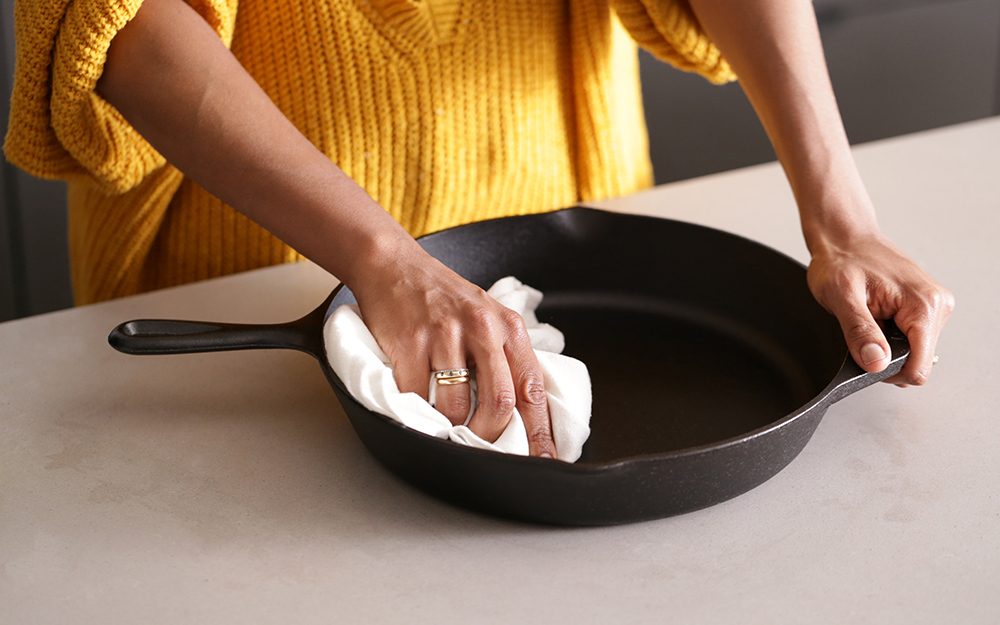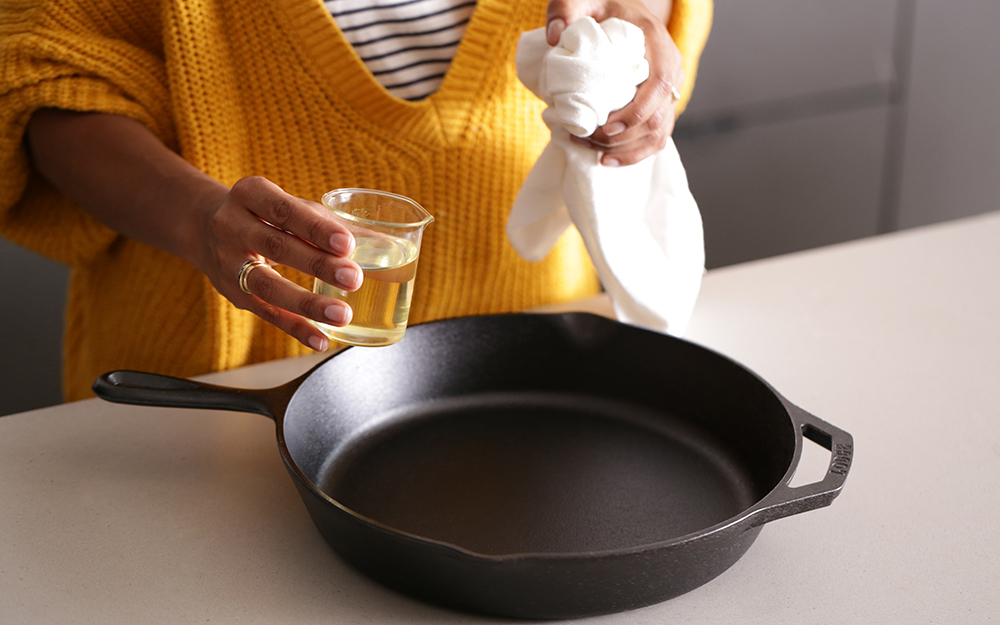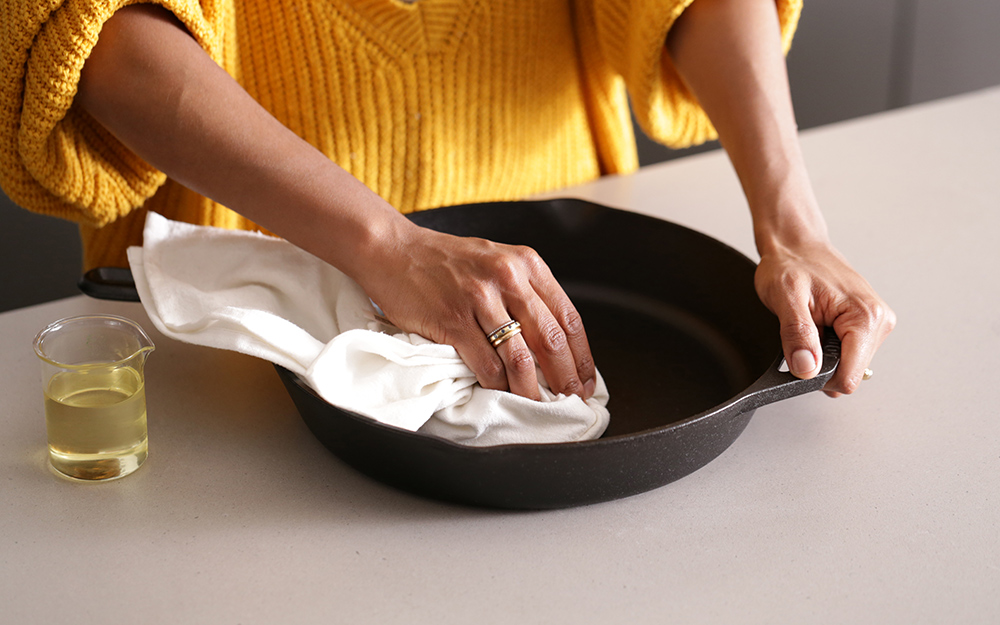How to Season a Cast Iron Skillet

Last updated September 7, 2023
A cast iron pan’s “season” serves much like a seal: a hard, waterproof coating that protects the pan from rust and provides a nonstick surface for cooking. Seasoning cast iron calls for adding many thin layers of fat or cooking oil that hardens onto the pan through a process called polymerization, which happens when the fat is heated.
Most cast iron cookware will come pre-seasoned, but it’s a good idea to add another few layers of seasoning when you first get a new
cast iron skillet. While your seasoning will actually be improved each time you use the pan to cook, some people like seasoning a cast iron skillet periodically to help maintain the nonstick cooking surface.
This is an especially good idea if you’ve had to scour your skillet recently, or if you’ve cooked something highly acidic before your seasoning was well established. Contrary to what some might think, learning how to season a cast iron skillet is a simple process that even a cooking novice can master on the first try.
Difficulty:
Beginner
Duration:
Under 2 hours
Table of Contents
Prepare Your Skillet
Apply Oil to the Skillet
Heat and Repeat
Prepare Your Skillet

To begin seasoning your cast iron skillet, place a sheet of heavy-duty aluminum foil on the bottom of your oven, or a baking sheet covered in aluminum foil on the lowest rack. Preheat the oven to 400°F.
Wash your skillet with soap and water, then dry it off completely with a soft cloth or paper towel.
Apply Oil to the Skillet

Rub the skillet all over – including the sides and bottom of the pan – with a neutral-flavored oil with a smoke point that’s above 400°F. Refined corn oil, refined sunflower oil and grapeseed oil are all fine options because they are affordable and their smoke points are 450°F or higher. Some people like to use lard or shortening, but vegetable oils are preferred because they’re easier to spread. Buff the skillet well, rubbing the oil into the pan with a soft cloth or paper towel so the oil evenly coats every surface, even the bottom of the skillet, without any pools or drips.
Tip: Seasoning cast iron works best with thin layers of polymerized oil from unsaturated fats such as corn oil. Saturated fats found in lard or shortening don’t polymerize as well.
Heat and Repeat

Place the skillet upside down on a center rack in the oven and heat it for 30 minutes. Placing the pan upside down helps make sure that any drips will land on the foil instead of hardening unevenly on the skillet’s cooking surface. Open your kitchen windows and turn on ventilation in case of smoke.
After the pan has cooled the final time, wash and dry it well. Some cast iron enthusiasts avoid washing their skillets with soap for fear that it dissolves the seasoning, but a well-seasoned skillet should not lose any layers due to soap. Avoid soaking your seasoned skillet in water for extended periods of time, however.
Now that you’ve learned how to season a cast iron skillet or pan, be sure to use it regularly. The more you cook, the better seasoned cast iron skillets will become over time, so sprinkle your spices and seasonings and sear your steaks with abandon. Your cast iron pans will appreciate the workout. Ready to start your project? The Home Depot delivers online orders when and where you need them.



























